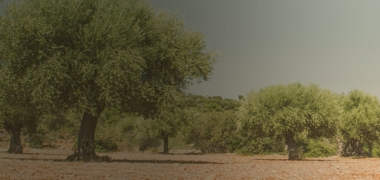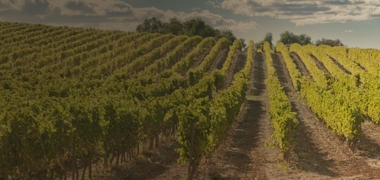Plots in Gipuzkoa - buy, sell or rent easily
Where to buy land in Guipúzcoa
Gupúzcoa has an average urban land value of over €150/m² and until recently it was around €300/m². The cheapest land for sale in the province is in Legorreta, with a minimum price of €1/m²; Amézqueta, with €4/m²; and Vergara, with €7.20/m². Meanwhile, the most expensive urban lots are in Astigarraga, Fuenterrabía and Ormáiztegui. Building plots for sale live in a situation similar to urban ones, as they are mainly concentrated in the same areas.
The rustic lands have a great value, being the predominant province in the fruit and vegetable activity. Their prices are lower than the urban and developable ones since there is greater availability of these surfaces in the region.
The influence of industrial activity on urban planning
Guipúzcoa has an area of 1,974.46 km², it is smaller than its neighbours Álava and Vizcaya. It is a diverse territory that runs between valleys and mountains of great natural and forest wealth. This Basque province stands out for its cutting-edge technology industry, which, together with the service sector, is a source of wealth and prosperity.
Industrial activity has had a decisive influence on the urban planning of Gipuzkoa cities, as it has been the driving force behind their development and structuring of urban space. Its evolution over the years has led to the reorganization of the industrial space, which has had to adapt to urban growth to relocate to technology parks and industrial estates, located in the flat areas of the valleys and riverbanks on the outskirts of the urban centres.
While the centre of the cities has residential land use, in addition to having occupied the space abandoned by the companies that relocated to places more suitable for the industry.
Currently, Guipúzcoa has an urban surface of more than 13,000 hectares, in which it is committed to urban and environmental improvement that increases the quality of life of its cities and urban spaces.
A bank of agricultural land is available to those who need it
This province has an agricultural area of more than 39,000 hectares and the Department of Economic Promotion, Rural Environment and Territorial Balance of the Basque Country has created the "Agrarian Land Fund", to make available to interested persons, farms for develop professional projects in the agricultural sector. The lands that are not being worked can be offered to whoever is interested and they can request them to develop agricultural exploitation.
Horticulture and gardening, a profitable investment
Every year new farmers join the production of this type of crop attracted by its profitability. In fact, in Guipuzcoa there are more than 1,000 farms that sell food, of which more than half are dedicated to horticulture. Some of these farms have a greenhouse and others use hydroponic techniques.
Fruit trees, vineyards, and pastures form part of the Gipuzkoa landscape
The fruit trees that stand out are the apple trees of local varieties to produce cider, in addition to the kiwi and the walnut (both for its wood and for its fruit).
In recent decades, the number of hectares dedicated to vineyards to produce txakoli with the Getariako Txakolina Denomination of Origin has increased considerably and today covers almost 400. There are currently 96 grape producers in Guipúzcoa and more and more wineries are registering in this denomination. Its production is marketed mainly in the Basque Country.
The vineyards of autochthonous varieties are small and are located scattered along the coastal strip or the mountain valleys since they are suitable places for cultivation thanks to their orography and the microclimates that are created, with high rainfall (especially in spring) and hours of light. As well as cool nights and southerly winds in September that facilitate the ripening of the grapes.
Annual forage crops (grasses, artichokes...) and perennial meadows and pastures for cattle are also harvested on this land. In addition, there are extensive ones such as the famous Tolosa beans.
Outdoor livestock
Cattle for milk production stand out in the first place, followed by sheep, goats and horses, as well as the breeding of fighting bulls for bullfights, very typical in this area and other regions of Spain.
In spring the animals feed on the fresh grasses of the pastures in the mountains, while at the end of autumn they return to their stables or farms.
The forest of Europe
This Basque province is one of the territories with the largest forest mass in Europe. 75% of the territory is mountains and 63% is covered by forests with species such as conifers, pines, beech trees and Atlantic mixed forest, among others. 20% have the Protected Natural Space cataloguing. Its mountainous orography is crossed by valleys, where agriculture is developed, and mountain ranges, which are used especially for forestry and livestock.
Industry and services are the basis of the Gipuzkoa economy
Guipúzcoa has a long industrial tradition and is committed to this economic sector, which despite its diversification and having lost weight, is still one of the main engines of its economy. As in the rest of the country, the service sector is constantly growing and advocates research and development, which joins the secondary sector to advance hand in hand with progress. On the other hand, the agro-fisheries sector has gradually diminished its importance. Behind this is the construction that, in general, has evolved since the 1980s.
In the industrial sector, which has diversified, and internationalized, small and medium-sized companies predominate. The metallurgical activity occupies the first place and has been technified and modernized. Added to this is the production of machinery and electrical material, energy, graphic arts, food, transport material, rubber and plastic, among others.





















































































